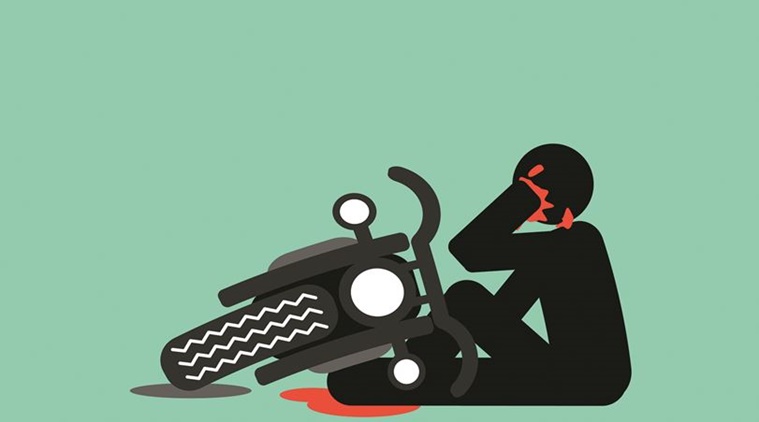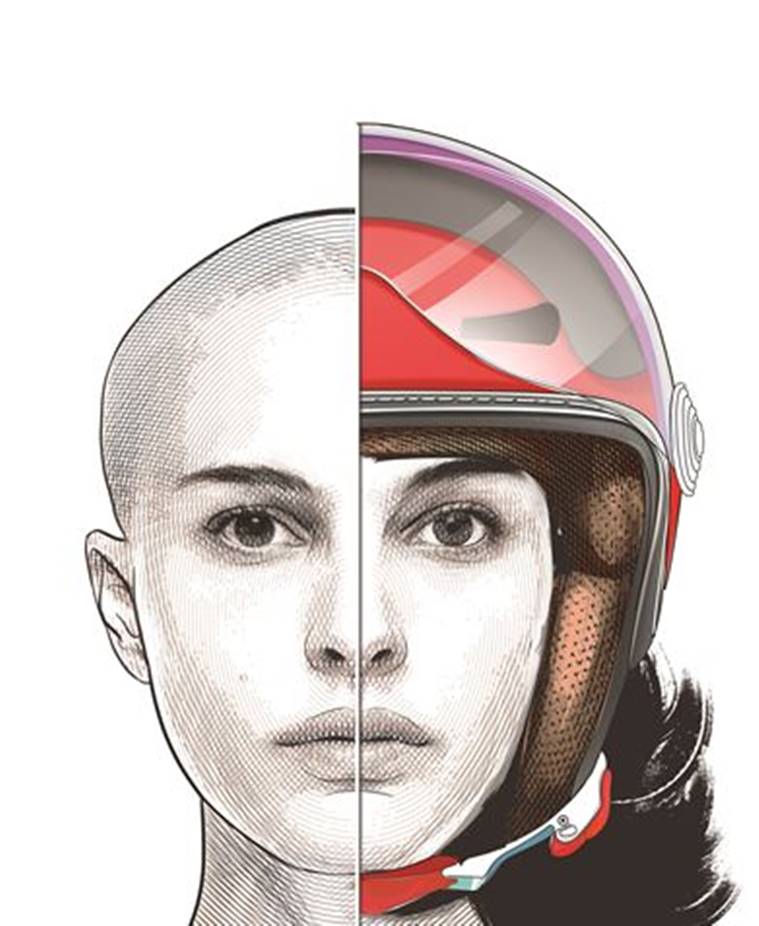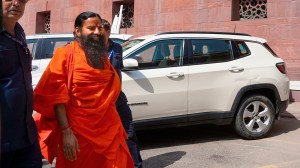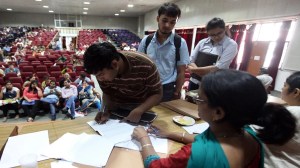- India
- International
Head first: PGIMER Chandigarh receives on average 33 cases of critical injuries due to road accidents daily
Doctors say a victim can recover from road accident injuries to other body parts but chances of survival from brain injuries are minimum. The helmet is the single most effective way of reducing fatalities from two-wheeler crashes.
 Medical science categorizes the injuries into two parts: preliminary injuries and secondary injuries. The preliminary injuries are visible but secondary injuries can be seen only through the CT scan.
Medical science categorizes the injuries into two parts: preliminary injuries and secondary injuries. The preliminary injuries are visible but secondary injuries can be seen only through the CT scan.
The advance trauma centre (ATC) of PGIMER, the premier health institute of this region, receives on average 33 to 35 cases of critical head injuries due to roadside accidents daily. Roughly two dozen of these cases have to be referred for surgery for blood clotting, hematoma, hemorrhage and skull fractures. Almost daily, one or two persons are declared brought dead due to severe head injuries.
“First of all, we need to understand that a skull is a protective guard of our brain, which is the central organ of the human nervous system. Skull, which is subdivided into brain case and facial bones, is the container of our brain. The brain case consists of eight bones, which provides protection to our brain. Any injury on the coronal suture and frontal bone of our skull has a direct and indirect effect on our brain. That is why, in every case of road accident, we prefer that the injured should go under Computed Tomography (CT) Scan of the head,” said Dr Rajesh Chabra, a surgeon and senior professor at PGIMER’s neurosurgery department.
Medical science categorizes the injuries into two parts: preliminary injuries and secondary injuries. The preliminary injuries are visible but secondary injuries can be seen only through the CT scan. Blood clotting, hematoma, damage of brain’s nerves, hemorrhage falls in the category of secondary injuries, which cannot be seen through the naked eyes. The consequences of secondary injuries can be preventëd only if a person is provided medial treatment within a minimum time after the accident.
Dr Rajesh Chabra explained that when the skull gets hit with a huge force as tends to happen in a road accident, it causes traumatic brain injury (TBI).
TBI is of three types: coup, contrecoup, and coup-contrecoup. Coup injuries are on the same side of the brain, clearly and directly below the sign of impact. Contrecoup injuries are the ones on the opposite side of brain from where the impact has occurred. The brain receives no injury on the side of direct impact in contrecoup.

 According to the WHO, wearing a helmet is the single most effective way of reducing head injuries and fatalities resulting from [two-wheeler] crashes.“The coup-contrecoup injuries are the most dangerous, which affect both sides of the brain, irrespective of which side the brain has received the impact. This type of injury, which is common among vehicular road accident victims, especially two-wheeler riders, occurs when huge impact on the skull presses the brain from one side and opposite side of brain strike the skull. Permanent brain damage risks are very high with coup-contrecoup injuries,” said Dr Chabra.
According to the WHO, wearing a helmet is the single most effective way of reducing head injuries and fatalities resulting from [two-wheeler] crashes.“The coup-contrecoup injuries are the most dangerous, which affect both sides of the brain, irrespective of which side the brain has received the impact. This type of injury, which is common among vehicular road accident victims, especially two-wheeler riders, occurs when huge impact on the skull presses the brain from one side and opposite side of brain strike the skull. Permanent brain damage risks are very high with coup-contrecoup injuries,” said Dr Chabra.
Explaining the role of the helmet, Dr Chabra said it not only protects the skull and saves the brain, but also provides security to the face.
“There are 14 facial bones. The facial bones contain the facial structures, form the nasal cavity, eyeballs and support teeth of lower and upper jaws. They include two inferior nasals, lacrimal bones, two maxilla, two nasal bones, two palatine bones, one vomer and two zygomatic bones. I always tell people and have also observed while dealing with road accident cases that a victim can recover from the road accident injuries to other body parts, including legs, arms, ribs and knees, but chances of survival from brain injuries are minimum. And this is the reason that we should always protect our head. These days, protection guards for every body part are available at the market but the first attention should always given to head, which consists skull, a guard of our brain, which controls most of the activities of our bodies,” Dr Chabra said.
According to the WHO, wearing a helmet is the single most effective way of reducing head injuries and fatalities resulting from [two-wheeler] crashes. “Motorcyclists who do not wear helmets are at a much higher risk of sustaining head injuries and from dying from these injuries. In addition, riders who do not wear helmets place additional costs on hospitals while the disability that results from these head injuries incurs costs at an individual, family (or care-giver) and societal level”. In 2004, the World Health Assembly adopted a resolution asking member states to strictly legislate and enforce the wearing of helmets by two wheeler drivers and pillion riders.
Dr Sameer Aggarwal, Professor, Department of orthopedics at PGIMER, told Chandigarh Newsline that there are huge cases when people suffer severe head injuries despite using helmets because those helmets are of a substandard quality. He said, “We receive several road accident cases every day when people suffered head injuries while using substandard quality helmet. We should always use good standard helmets. The facial injuries can damage the shape of a human face. Though treatments are available for the facial injuries, immediate recovery is not possible. There would be minimal head injury, if a rider uses a helmet.”
“The government should give a subsidy for purchasing the good quality helmet. If a person is not wearing a good quality helmet, then it will not serve the real purpose,” said Dr Aggarwal.
A study conducted by the Department of Neurosurgery at PGIMER, published in January 2015 in Neurology India Journal, found that male drivers of two-wheeler vehicular accidents (71.4%) were most commonly injured. That is because there are males than females driving two-wheelers. Among helmeted patients, only 4.8% suffered severe head injuries compared to 23.7% of un-helmeted patients.
The study was published under the title of “Pattern of injuries among drivers, pillion riders and co-passengers of two and four-wheeler vehicles need to be separately evaluated and addressed”. For the study, 1,545 patients (1,314 males and 231 females) between 1 April, 2011 and 31 December 2011 were included to evaluate the profile of head injury patients due to road traffic accidents, admitted to Postgraduate Institute of Medical Education and Research (PGIMER), Chandigarh.
The study said that only full coverage helmets were effective in preventing head injury. Among helmeted patients with a proper chinstrap, 2.6% suffered critical injuries compared to 14% of non-strapped ones, the study had found.
It also stated that in 142 patients in whom the helmet was still in position after the crash, only 0.7% suffered severe head injuries. The study also concluded that only 13.4% of the two-wheeler vehicles (16.5% drivers and 3.7% pillion riders) who were studied were wearing a helmet at the time of the accident. Of these, 72.7 per cent of patients were wearing a full-coverage helmet. Only 44.4% helmets were Indian Standards Institute (ISI) certified that is, standard helmets, the report said.
Apr 24: Latest News
- 01
- 02
- 03
- 04
- 05






































